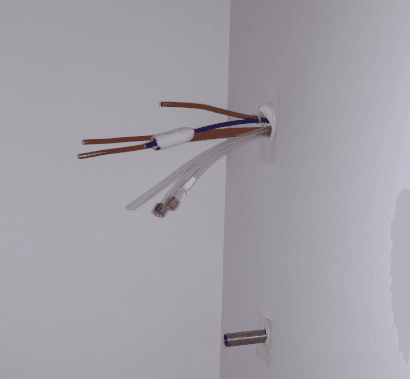Your walls are covered in sweat
CU Boulder study reveals fate of indoor chemical emissions, including unexpected buildup of lactic acid from sweat

Lactic acid—the main chemical in human sweat—leaves our skin, travels through the air, and sticks to our walls. And according to a team of chemists who outfitted the University of Colorado Art Museum with state-of-the-art air-sampling instruments: it’s doing so at surprisingly high rates. The finding highlights the need to better understand the fate of the indoor chemicals, especially those that may impact human health.
“We discovered that the surface uptake of lactic acid—how ‘sticky’ it is indoors—is much greater than previous studies suggested,” said Demetrios Pagonis, a CIRES postdoctoral researcher and lead author on the study published in the latest issue of Environmental Science & Technology. “We found that 97 percent of the lactic acid emitted in the museum ended up on a surface, while some previous models would have predicted little or no surface uptake.”
Pagonis and his team used state-of-the-art mass spectrometry instruments, funded by the Sloan Foundation, for the new indoor air assessment. “It allowed us to bring the same level of detailed instrumentation and resources that have been used in atmospheric research to the indoor air arena,” said Pagonis. “We can see where chemicals come from, how they behave, and where they end up.”

Science behind the scenes: Demetrios Pagonis and Derek Price operate specialized mass spectrometry equipment behind the wall of the CU Art Museum gallery to learn more about the fate of the chemicals in indoor air. Photo: Doug Day/CIRES
For six weeks, as visitors meandered the main gallery of the CU Art Museum, the researchers studied the room from behind a wall, spying not on the people, but on the chemicals in the air. Their targets: the products used to clean and paint the room, emissions from visitors’ deodorants and skin, even the alcohol on people’s breath.
To track down exactly what happens to these chemicals indoors, the team drilled an inconspicuous, one-inch hole into the wall of the main gallery, threading air sampling tubes into a room filled with mass spectrometry equipment. Those tubes collected data on concentrations of airborne chemicals and particulate matter in the gallery. The team also set up sampling equipment in an air supply vent, collecting air from the ventilation system that had circulated through the building.

The public-facing, one-inch inlet in the gallery with air-sampling tubes. The inlet was inconspicuously placed in the corner of the room as visitors meandered the space. Photo: Doug Day/CIRES
The two sampling locations helped the researchers track many chemicals over time to look for telling changes. Chemicals such as carbon dioxide and acetone stayed roughly equal in both locations, with swings up and down that corresponded with the crowds of people. They rose first in the gallery, then in the air supply shortly after, and fell in that same order, with the building ventilation rate.
“But lactic acid behaved differently,” said Derek Price, CIRES postdoctoral researcher and second author on the study. “Concentrations of lactic acid in the gallery and air supply vent decayed at a faster rate than other chemicals we measured. It left the air faster than the air left the building—which told us that lactic acid was sticking to the building surfaces.”
These unexpected results emerge from just one of a series of indoor air quality experiments conducted in the last year by scientists who have generally focused their attention and instruments on outdoor air quality. CIRES scientists and colleagues outfitted a Texas “test house” with advanced air sampling equipment, for example, and found that while cooking a typical Thanksgiving dinner, indoor air pollution levels briefly spiked to levels typical of a polluted city. They are still assessing results from samples taken in a workout room in CU Boulder’s Dal Ward Athletic Center. And there’s more to explore in the museum study, as well: dozens of other chemicals that exhibited unanticipated patterns.
“Buildings are now an integral part of our environment,” said Joost de Gouw, CIRES Fellow and Visiting Professor and coauthor on the study. “Plus the compounds that are released indoors do not stay indoors. The more volatile compounds are mixed to the atmosphere, and we think that these organic pollutants from buildings now rival the importance of organic pollutants from motor vehicles in ambient air.”
The study’s results will be useful for improving indoor air models to learn more about how indoor air quality impacts human health and, in the case of the gallery: art preservation. The researchers were able to confirm art-harming pollutants in the CU Art Museum were all at safe levels.
“Our next steps include learning more about the fate and impacts of chemicals that stick to walls,” said Paul Ziemann, CIRES fellow and corresponding author on the study. “Do the chemicals stay there? Do they react? Do they leave the wall? Do they travel outside the building?”